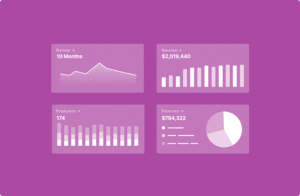Investing can be intimidating, especially for those who are new to it. With so many options, risks, and financial jargon, where can one start? Robo-advisors are a smart, hassle-free way to manage your money, doing everything for you. These online investment tools use computer programs to track your money, making investing simple, affordable, and efficient. Whether you’re new to investing or just want to relax, robo-advisors are a modern way to manage your money. This guide covers everything from how they work to how to pick the right advisor. Say goodbye to confusion and begin your journey to smart, hassle-free, and easy investing.
What Does a Robo-Advisor Do?
A robo-advisor is an online tool that helps people plan their finances and manage their investments without much human intervention. They use algorithms to create a customized portfolio based on your financial goals, risk tolerance, and investment horizon. Robo-advisors are more cost-effective than traditional financial advisors because they offer a wider range of investment options and typically charge lower fees. They handle all transactions, from asset allocation to asset adjustments. This makes them perfect for beginning investors or those who prefer to stay in the background. They are available 24/7 and have a user-friendly interface that brings investing into the modern era.
How Do Robo-Advisors Work?
The first step is a simple assessment of your goals, financial situation, and risk tolerance. Based on your answers, the robo-advisor creates a diversified portfolio, usually consisting of ETFs (Exchange Traded Funds). The algorithm constantly monitors the market and automatically rebalances your stocks for optimal performance. Some of the more powerful robo-advisors also allow you to take tax losses, reducing your tax burden. We design the entire system to maximize returns and minimize risk, relieving you of the burden.
Why a Robo-Advisor Is a Good Idea:
One of the advantages of robo-advisors is their affordability. Traditional advisors charge high fees, while robo-advisors can professionally manage your money for a much lower price. They also eliminate emotional decision-making and prevent you from making the wrong investment decisions. Automated systems ensure consistency, and because no large initial investment is required, anyone can use them. They also save time because you don’t have to do a lot of research or constantly adjust your options. Robo-advisors simplify the process for individuals who are new to investing.
How to Choose the Best Robo-Advisor:
To avoid making the wrong choice, you need to select the right robo-advisor that fits your needs. Consider factors such as fees, account types, investment options, and customer service. Some websites are great for retirement planning, while others excel at investing in a way that benefits society. Look for websites with transparent pricing and performance tracking. You can narrow your choices by reading user reviews and comparing features. Many robo-advisors offer a free trial before committing to a full account.
Misconceptions about Robo-Advisors:
Many people believe that robo-advisors are only for new investors. Even experienced investors use them for passive fund management because they’re easy for beginners to use. Another misconception is that they don’t offer a personalized approach. Many platforms now offer hybrid models and the option to interact with human advisors. Some people also think robo-advisors are risky, but in reality, their diversified portfolios can mitigate risk. Correcting these misconceptions will help you decide if a robo-advisor is right for your needs.
Disadvantages to Consider:
Despite their many advantages, robo-advisors aren’t perfect. Without interacting with many people, you’ll receive less personalized help when you find yourself in a difficult financial situation. Advanced tools like direct stock selection or other investment styles may not be available on all platforms. Furthermore, automated systems may not react as quickly as human experts in volatile markets. You should consider these factors before allocating all your money to a robo-advisor.
Getting Started with a Robo-Advisor:
Getting started is easy. Simply sign up for the site of your choice, take an initial test, and fund your account. Most robo-advisors start with just $100. Once you set up your portfolio, the method takes care of the rest. The app or website allows you to stay focused on your progress and adjust your goals as needed. Always do what you need to do, and the system will take care of the rest over time.
Conclusion:
Robo-advisors have changed the way people spend money by making investing simple, affordable, and straightforward. These sites offer a smart way to earn money, regardless of your level of experience or readiness. You can confidently take control of your financial future by understanding how they work, their benefits, and how to choose the right platform. What’s the best news? You don’t have to be an expert; you just need the will to get started. So what are you waiting for? Discover the world of robo-advisors and start investing easily today!
FAQs:
1. Is it safe to use a robo-advisor?
Indeed, reputable robo-advisors utilize cryptocurrency and adhere to financial regulators’ regulations to safeguard your investments.
2. How much do robo-advisors cost?
Fees vary but are typically between 0.25% and 0.50% of the assets they manage annually, which is less than what traditional advisors charge.
3. Will I lose money with a robo-advisor?
Every trade carries the risk of losing money, but a robo-advisor diversifies your investments and limits your losses.
4. Does a robo-advisor offer real help?
Some hybrid models offer a human advisor for an additional fee, combining technology with personalized assistance.
5. How much money should I invest?
Many sites offer access starting at $100, making them accessible to most investors.




